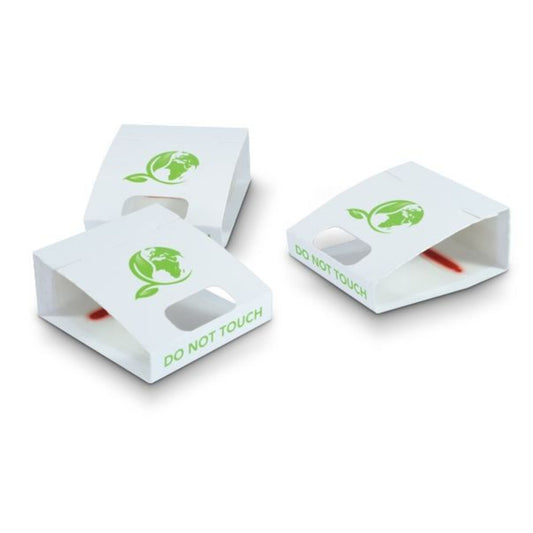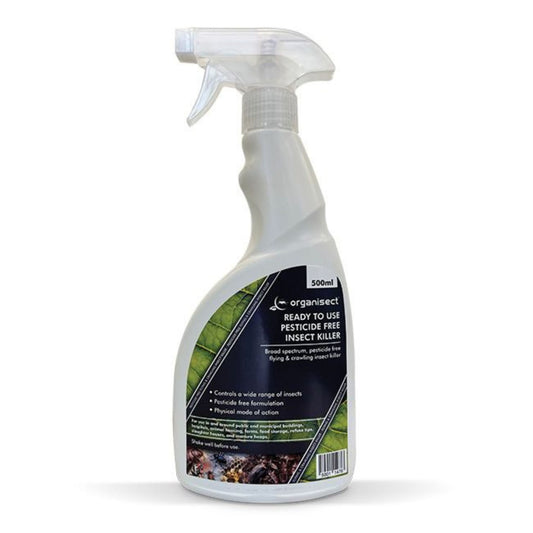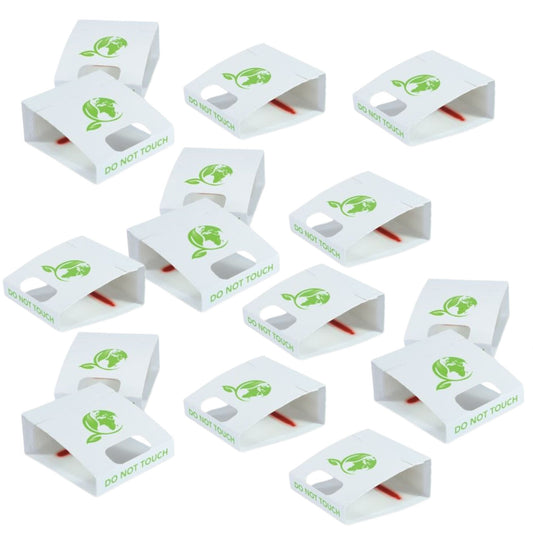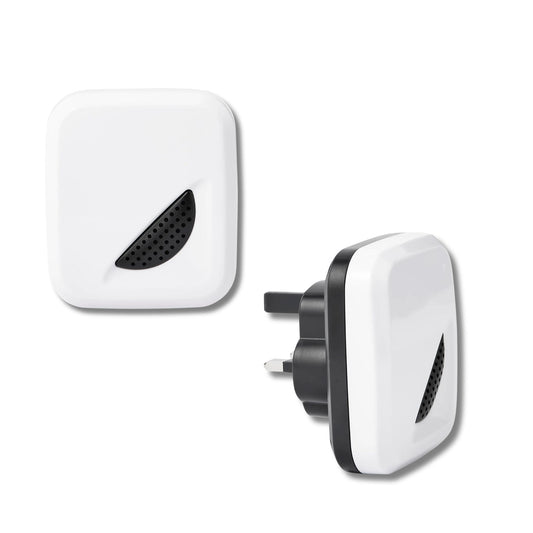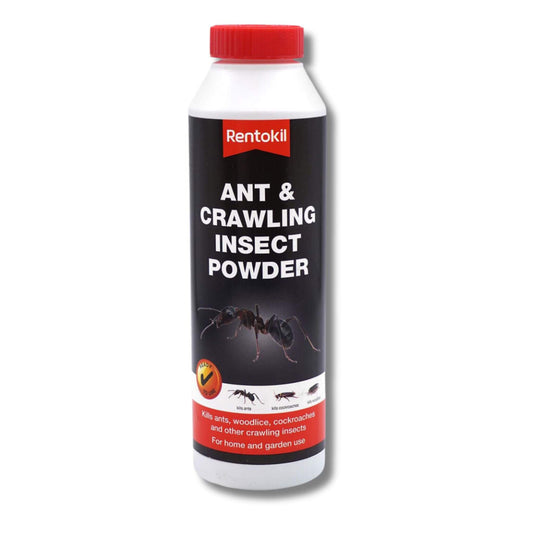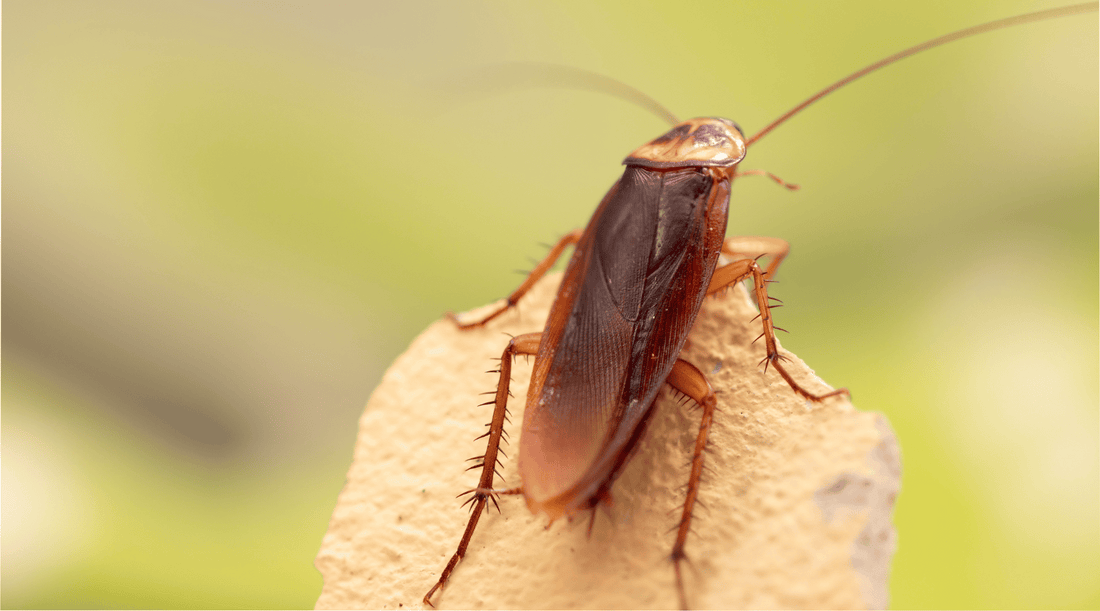
Expert Guide on How to Get Rid of Cockroaches Yourself
Share
In any home, no matter where in the world, cockroaches are considered the most dreaded and unwelcome guests of them all. They are famous for their ugly presence and capacity to survive in the most adverse conditions. To make things worse, they can pose serious dangers to health by spreading diseases and causing allergic reactions.
You will be glad to know that you can control cockroaches yourself without calling expensive professional help. This guide provides easy-to-follow steps to identify, prevent, and remove cockroaches from your home. In doing so, you will create a safe, healthy and enjoyable living environment.
What Are Cockroaches?
Cockroaches are insects belonging to the order Blattodea. They are infamous for being capable of enduring some of the most difficult conditions. Cockroaches are typically brown or black and have flat, oval-shaped bodies with very long whip-like antennae. Cockroaches are known for being incredibly fast and are capable of hiding in small, dark places.
There are over 4,000 species in the world, but only a few are a few of these are found in the UK. Two of the most notable types of cockroaches are the German cockroach (Blattella germanica) and the Oriental cockroach (Blatta orientalis). The German cockroach is light yellow / brown with "go faster" stripes and is 10mm-15mm long. The Oriental cockroach is shiny black or brown and is larger at 20mm-25mm.
Cockroach Behaviour
Cockroaches are nocturnal insects and prefer to stay hidden in dark, damp places throughout the day. They are opportunistic scavengers. This means that they feed on a wide variety of organic matter, including food scraps, decaying materials, and even paper or glue. They are typically considered omnivores as they eat most meat and non-meat.
Cockroaches are highly adaptable. They can survive in almost any environment, but they thrive best in warm, humid areas close to food and water sources.
Cockroach Lifecycle
All cockroaches start off in the egg stage which involves the female depositing an ootheca, essentially a case of eggs, in a safe, dark place. Following gestation, the nymphs hatch and grow through stages into adults. The process takes multiple months and involves cockroaches casting off their skin 5-6 times to allow them to grow further.
German cockroaches
German cockroach eggs come in an ootheca containing around 30 eggs. Adult German cockroaches can produce around 5-7 oothecae during their lives which is equivalent to 150-210 eggs. The eggs have a gestation period of around 1 month. Once hatched the nymphs take around 6-12 weeks to become fully grown adults. Once they reach adulthood, they can live for up to 6 months.
German cockroaches are great climbers, preferring to live in areas with higher temperatures such as in boiler rooms or machinery motors.

Oriental cockroaches
Oriental cockroach eggs come in an ootheca containing around 15 eggs. Adult Oriental cockroaches can produce around 8 oothecae during their lives which is equivalent to 120 eggs. The eggs have a gestation period of around 2 months which can prolong treatments. Once hatched the nymphs take around 12 months in optimal conditions to become fully grown adults. Once they reach adulthood, they can live for between 1-6 months.
Oriental cockroaches are nocturnal and can withstand cooler temperatures. They are commonly found emerging from sewers, drains and other void areas in building structures.

Identifying Cockroach Infestations
You must be able to recognise the presence of a cockroach infestation as early as possible for effective control. Here are some of the key tell-tale signs to look out for:
Physical Sightings
Perhaps the most obvious identification method is through spotting them in real life. Cockroaches are most often seen scurrying across floors or walls at night with a somewhat jagged movement. During the day, they tend to hide in dark, secluded areas such as cracks, crevices, and behind appliances.
Droppings
Cockroach droppings resemble small, black or brown specks and are often found in areas where they are active. Cockroach droppings can easily be mistaken for dirt or coffee grounds, so it's important to inspect them closely.
Egg Casings
Cockroaches lay their eggs in capsule-like cases called oothecae. These are often left hidden in cracks or behind furniture. These casings are typically brown and can contain multiple eggs, leading to a rapid increase in population if not addressed.

Unpleasant Odour
If you experience a strong, musty odour it may be another sign that you have a cockroach infestation. This unpleasant smell comes from the pheromones they release. This can be particularly noticeable in areas with a high concentration of cockroaches.
Preventing Cockroaches
Prevention is always the best strategy for managing cockroach populations in your home. Here are several effective methods that we recommend:
Eliminate Food Sources
Cockroaches are attracted by food and water, so make sure to keep your home clean and free of food debris at all times. Store food in sealed containers, clean up spills immediately, and regularly dispose of rubbish in sealed bins.
Seal Entry Points
Regularly inspect your home for cracks and gaps, especially around doors, windows and walls. Once identified, seal them to prevent cockroaches and other pests from entering. We recommend using weather stripping and caulk to seal any potential entry points.
Reduce Moisture
Cockroaches are drawn to moisture, so fix any leaky pipes, dripping taps, or other sources of water or dampness in your home. Ensure that kitchens and bathrooms are well-ventilated and dry.
Natural DIY Cockroach Control
Natural methods are often preferable for managing cockroach infestations before chemical solutions are considered. Here are several non-chemical methods we recommend to help control cockroaches:
Diatomaceous Earth
Diatomaceous earth is a fine powder made from fossilised algae. It is safe for humans and pets but lethal to cockroaches. When cockroaches come into contact with diatomaceous earth, the powder damages their exoskeletons. This causes them to dehydrate and die. Apply it in thin layers in areas where you think cockroaches may be active.

Boric Acid
Boric acid is a naturally occurring compound that is especially toxic for cockroaches. Sprinkle the boric acid in areas where cockroaches are likely to be present, such as under appliances and along baseboards. Be sure to keep it away from pets and children.
Natural Repellents
Essential oils such as peppermint, eucalyptus, and lavender are believed to repel cockroaches. One way of doing this is to mix a few drops of essential oil with water in a spray bottle. You can then apply it around entry points and common cockroach locations.
Chemical Solutions for Cockroaches
If natural solutions are not effective, chemical interventions may be necessary. Before using any chemical products, make sure you learn about the ingredients and potential side effects. Always read and follow the instructions carefully. We recommend using a non-toxic solution where possible.
Sticky Traps
Cockroach traps use a strong, non-toxic adhesive to attract cockroaches and trap them as they cross the trap. They are great for monitoring infestation levels and catching individual cockroaches however do not target the source of an infestation. Cockroach traps are generally safe around people, kids and pets.
Insecticidal Sprays
Insecticidal sprays can be used to kill cockroaches on contact. Focus on areas where cockroaches are likely to hide, such as cracks and crevices. Don't forget to follow the manufacturer's instructions closely. We recommend trying a non-toxic insect killer spray first as this is safer for people and pets.
Bait Stations
Cockroach bait stations are an effective way to control cockroach populations. The baits are specially designed to attract cockroaches, which then eat the bait and return to their hiding spots where they eventually die. The bait also has the potential to kill other hidden cockroaches through secondary transmission. Place bait stations in areas where cockroaches are most active, such as under sinks and behind appliances but out of reach of children and pets.
Cleaning and Repairing After Cockroach Infestations
Don't forget to apply good hygiene when you finish tackling a cockroach infestation. Thoroughly clean and repair all areas where cockroaches were known to be. We recommend following these steps:
Clean Surfaces
Wipe down all surfaces with a disinfectant. You must remove any remaining cockroach droppings, eggs, or pheromones. This is because these could attract more cockroaches.
Repair Damaged Areas
Fix any cracks, crevices, or gaps in walls, floors, and cabinets to eliminate potential hiding spots for cockroaches.
When to Use Professional Pest Control Services for Cockroaches
If your cockroach infestation doesn't reduce or go away despite your best efforts, it may be time to call in the professionals. Pest control services can offer more potent solutions and customised advice. This will ensure your infestation is handled quickly and effectively.
Final Thoughts
By implementing the strategies outlined in this guide, you can manage and prevent cockroach infestations in your home.
Remember, early identification and prompt action are key. Regular cleaning, reducing clutter, and using natural methods can all reduce the risk of a cockroach infestation. If these methods do not yield results, consider using chemical solutions or seeking professional help. Taking control of your home will help maintain a safe, cockroach-free environment.
We go to great lengths to ensure that all our DIY cockroach control products are effective & easy-to-use.


